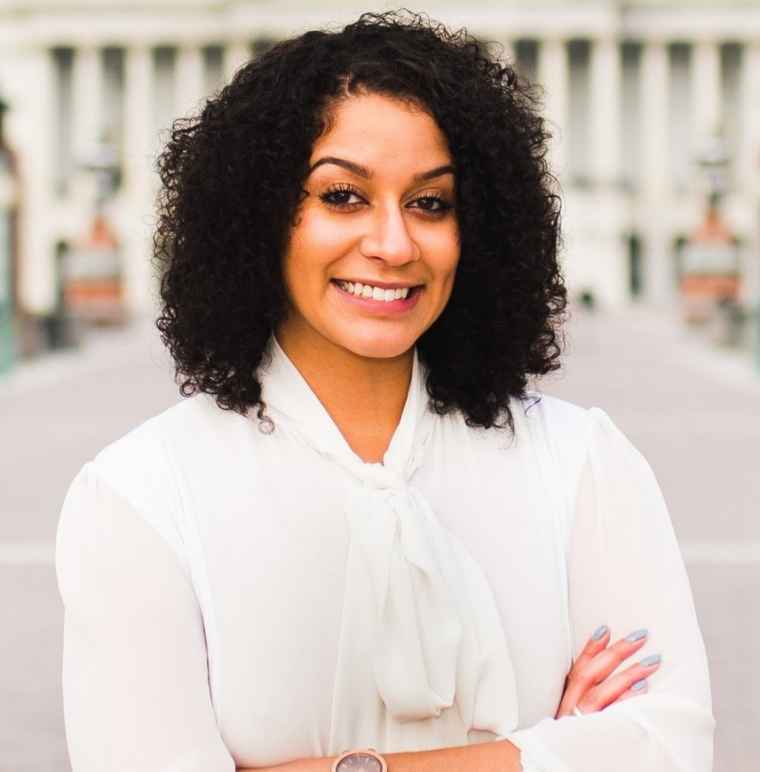
Written by Mo Del Villar
Growing up, I heard this phrase from strangers and members of my own extended family. Pelo malo is often used in Latino culture to describe curly, kinky, Afro-textured, or otherwise-not-straight hair as “bad hair.” Historically, the images of Latina women displayed on the big screens, in our living room, and on magazine covers celebrated actresses with lighter skin and straight hair (either naturally or forced by heat or chemical submission). Those girls and women did not look like me, and those that did seemed to change those parts of themselves to fit this image. Where did I fit? Which parts of this society acknowledge and embrace my lived experiences and my full identity?
This is a common story that permeates throughout the Black and Afro-Latino communities. The societal pressures of taming our “pelo malo” so as to be presentable. The warnings to not go into the sun, because your skin would tan darker and your melanin would shine through even more. The expectation of fitting into an image not created for us, but rather in opposition to our existence. Because of these stigmas and stereotypes, many of us have had to challenge these notions in our families, friendships, relationships, and workplaces. We have also felt backlash after gaining the confidence to wear our hair naturally without having to adhere to white beauty standards--not only to “get ahead,” but even to be considered at all for educational and employment opportunities.
We have heard the egregious story of Andrew Johnson, the high school wrestler who was forced to cut his dreadlocks in the midst of a competition. Of Black, white, and Puerto Rican descent, he was told by the white referee his hair was “unnatural” and would have 90 seconds to cut it or be disqualified. Truly think of the humiliation and emotion that goes into this moment and all that led up to it. Johnson had wrestled throughout that season and in years prior before making it to the varsity team. He had cultivated his hair through daily love and care. He had not been reprimanded in the sport or academic space up to this point. The rules stated that his hair could not fall beyond his earlobes, shirt collar, or eyebrows, as his opponent’s hair did throughout the match. The white referee decided to challenge Johnson’s appearance based on another part of the rule: that Johnson’s hair needed to be in its natural state. Think of the absurdity of this rule when applied to a young man with naturally occurring dreadlocks. Think of how absurd it is that an individual white referee had the authority to decide what counts for natural and what does not. And not consider that the “solution” of cutting his hair did nothing to address the “state” of his hair, natural or not.
Locally in Kansas City, we have heard stories like that of Tyree Bayan. After preparing for an interview with Cool Crest Family Fun Center, Tyree entered his interview with confidence. However, he was told at the start of the interview that “before moving any further,” they needed to discuss his hair. They told him that in order to be employed there, he would need to cut his hair. Despite having a 3.75 GPA in high school and running his own baby-sitting operation since he was 12, it was his hair that limited his employment opportunity. Tyree would not cut his hair, which is styled in neat dreadlocks he had been growing since he was 11. Stories such as Tyree’s and Andrew’s are not uncommon for individuals who wear their hair styled in afros, braids, locks, twists and naturally as it grows out of their head. But what these stories truly convey to the community is that those families that look like us are not welcomed in these community and family spaces.
Our hair can do amazing things. Our coils can soar up towards the sky like a crown. They can be braided into beautifully intricate designs. They can grow long as dreadlocks and locks over years of care and love--whether free forming or otherwise. Our hair can be puffed out, pulled back, twisted, or braided. Our hair is truly amazing. Discriminating against natural hair is bad practice in the education, employment, and public space. It is particularly offensive when all other qualifications are thrown out the window for discussion in light of our hair.
The CROWN Act stands for more than simply stopping hair discrimination from happening. It is about creating the type of world we would like to leave to our children. It is about the inspiration to dream big and reach your wildest dreams without societal hindrance. This issue often makes me think back to the iconic picture of President Obama in the Oval Office with five-year-old Jacob Philadelphia. While visiting the White House with his family, he asked President Obama if his hair felt like Jacob’s. The President bowed down to the little boy and told him to touch and feel for himself. In that moment, Jacob was allowed to feel and believe with his own eyes and fingers that someone with hair just like his can do a job as important as that of the President of the United States. This is vitally meaningful because he may not see it elsewhere represented in the media or in the community around him.
Passing the CROWN Act in Kansas City prevents businesses in the city from enacting such discriminatory policies. But we must continue forward to ensure that these stories no longer affect our students in our educational institutions. We must also spread the CROWN Act far and wide so that all people with natural hair in the United States are protected. This is an example of turning protest into policy. We cannot stop here.